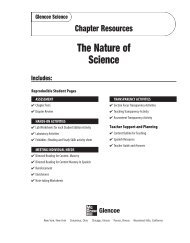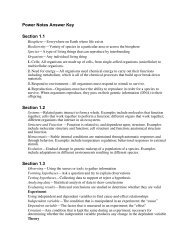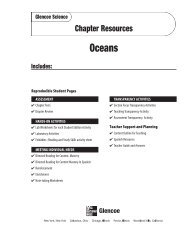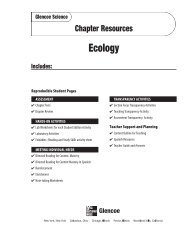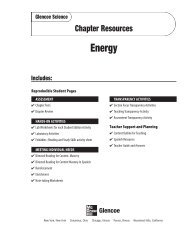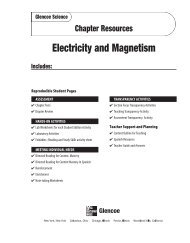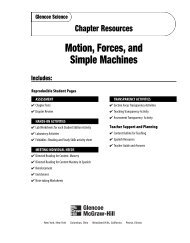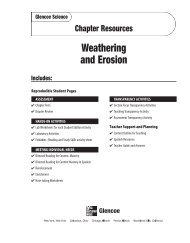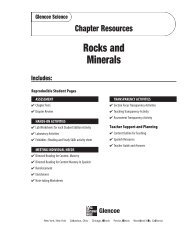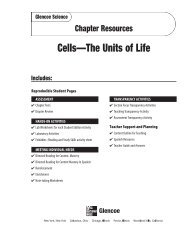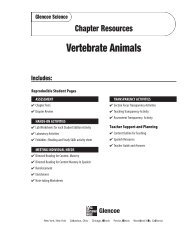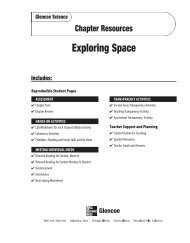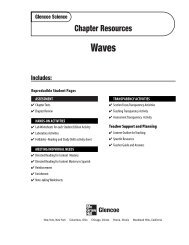Content Outline for Teaching - Potosi School District - Home
Content Outline for Teaching - Potosi School District - Home
Content Outline for Teaching - Potosi School District - Home
You also want an ePaper? Increase the reach of your titles
YUMPU automatically turns print PDFs into web optimized ePapers that Google loves.
13<br />
<strong>Content</strong> <strong>Outline</strong><br />
<strong>for</strong> <strong>Teaching</strong><br />
Oceans<br />
Underlined words and<br />
phrases are to be filled<br />
in by students on the<br />
Note-taking Worksheet.<br />
Section 3<br />
Waves<br />
A. Formed by wind, a wave is a rhythmic movement the carries energy through<br />
water.<br />
1. Waves have parts.<br />
a. Crest—highest point of a wave<br />
b. Trough—lowest point of a wave<br />
c. Vertical distance between crest and trough is height.<br />
d. Wavelength—horizontal distance between crests or troughs of two successive<br />
waves<br />
2. Wave motion—water particles do not move <strong>for</strong>ward unless the wave is breaking<br />
on shore.<br />
3. Breakers—collapsing waves near the shore caused by the wave bottom being<br />
slowed by friction with the ocean floor<br />
B. Tides—rising and falling of sea level caused by gravity from Earth, the Moon,<br />
and the Sun<br />
1. Spring tides—high tides higher and low tides lower than normal due to<br />
Moon, Earth, and Sun lining up<br />
2. Neap tides—high tides lower and low tides higher than normal due to Sun,<br />
Moon, and Earth <strong>for</strong>ming a right angle<br />
C. Wave erosion—wears away both rocky shores and beaches<br />
Discussion Question<br />
What are the four parts of a wave? crest, trough, height, wavelength<br />
Oceans 41




